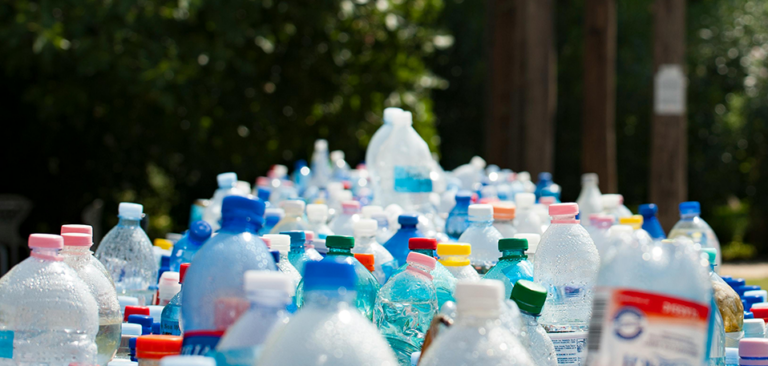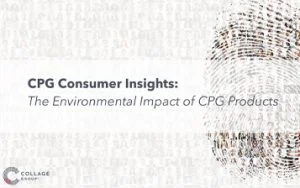Consumer Insights: The Environmental Impact of CPG Products

Consumers are aware of the environmental impact of CPG products.
To help the world’s leading brands, we investigated the environmental impact of consumer packaged goods (CPGs). This impact has been extensively documented and consumers are increasingly aware of the impact CPG products have on the planet. CPG products generate waste and pollution during production, including chemical residues, air pollutants, packaging, and wastewater. More specifically, research suggests global food and consumer goods account for 60% of greenhouse gas (GHG) emissions and between 50% and 80% of total land, material, and water use.
This, coupled with the sheer size of the CPG sector, makes the CPG industry a critical player in building a more sustainable economy.
This blog and download include a small sample of the deep cultural intelligence available to our members. Contact us to learn how you can unlock access to our cultural intelligence engine.
Fill out the form to download slides from our research report.

With this in mind, CPG companies are increasingly allocating time and resources to embed environmental and social responsibility into their operations. As brands embrace this shift toward sustainability, it becomes imperative that marketers and consumer insight professionals understand how customers are responding to these industry-specific sustainability advancements.
To address this need, research by our team at Collage Group looks at the perspectives American consumers have regarding the environmental impact of CPG products, across generations, race, and ethnicity. This study explores consumer expectations for how brands should respond to key environmental issues. Our objective is to help brands foster positive and lasting customer relationships–while developing sustainable business practices.
Climate change and sustainability are a top issue for most consumers
According to our CPG consumer research, 37% of the total American population wants companies to address climate change. This makes climate change the second most pressing issue consumers want brands to confront – second to brands supporting a robust and thriving economy. These findings are consistent across Millennials, Generation X, and Boomer populations. However, Generation Z, the younger cohort of Americans, exhibited a greater emphasis on social responsibility, with 47% of surveyed respondents wanting brands to prioritize women’s rights over climate change.
Our results reveal a consistent pattern across Hispanic (42%), Asian (50%), and White (34%) populations, where climate change emerged as the second most critical concern, following a robust economy. However, Black populations showed variation from this trend. Such populations want brands to address race relations (45%) while upholding a strong and thriving economy (53%).
Consumers put the onus on brands to address climate change and not on individuals
Across generations, 57% of consumers expect brands to assume a leading role in combating climate change by establishing more sustainable operations. Notably, this inclination is most pronounced among younger generations, with 64% of surveyed respondents from Generation Z affirming this.
Our research challenges the common misconception that sustainability concerns are primarily held by younger generations. Instead, our findings indicate that the majority of older generations also put the onus for sustainability on corporations.
Consumers are willing to pay a premium for more sustainable products and services
We asked consumers whether they agreed or disagreed with the following statement: “Is it important to buy products that are better for the environment even if it’s more expensive or difficult?”
Here’s what the surveyed participants had to say:
- 55% noted that it was important, underscoring the value of CPG sustainability.
- 26% noted that it was not important, suggesting some reservations about the potential trade-offs involved between sustainability, price, and functionality.
- 19% remained unsure, acknowledging the complexities inherent in this decision.
From these results, we conclude that the majority of U.S. consumers, across generations, race, and ethnicity, are willing to pay more for CPG products that are better for the environment.
Case study: Home care and cleaning products sustainability
The CPG industry covers a diverse range of product categories. When it comes to understanding consumer attitudes towards the environmental impact of CPG products, it becomes crucial for marketing and consumer insight professionals in the industry to delve into specific trends within the relevant product categories. In this particular case study, we look into home care and cleaning product trends to explore consumer perspectives on CPG sustainability.
Most notably, we found consumers want brands to address the issue of packaging waste, with the majority of Americans (59%) stating brands have a responsibility to utilize environmentally-friendly packaging. This sentiment transcends race and ethnicity, encompassing Hispanic (62%), Black (57%), Asian (59%), and White (59%) populations alike.
Building on this finding, a significant proportion of U.S. citizens express a preference for purchasing refill packages for home care products instead of acquiring new bottles (47%). This preference is most pronounced among Asian populations (53%), although it remains notable across other ethnicities, including Hispanic (46%), Black (44%), and White (47%) communities.
In this article, we’ve highlighted key findings from our CPG consumer research, to shed light on the evolving consumer landscape within the CPG industry. Our aim is to showcase what American consumers think about the environmental impact of CPG products and how brands should respond to these issues.
Marketing and insight professionals must understand and address these consumer preferences, ensuring they align with and exceed customer expectations in this evolving landscape. By doing so, brands can effectively resonate with their target audience while also contributing to a sustainable future.
Interested in more? Contact us for additional studies on how to connect with today’s consumers, and to learn how to make your brand a winner with high-growth segments.